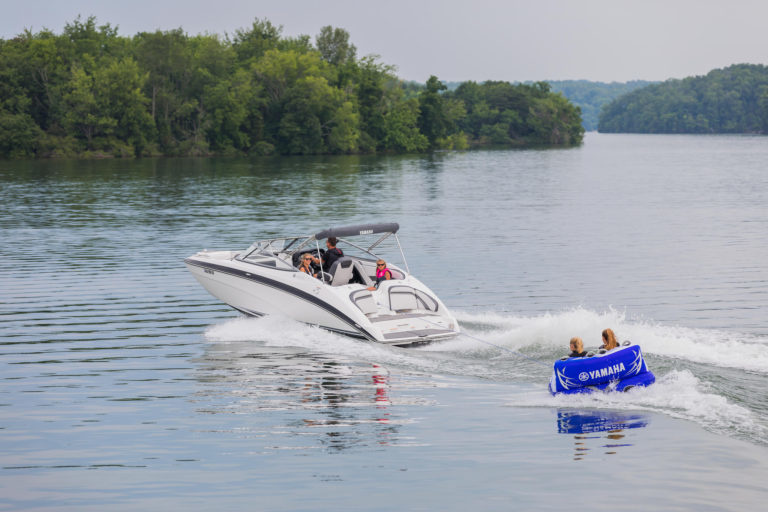If your boat is originally designed for tank towing, wakeboarding or water skiing, then everything is simple. But often small boats and boats do not have a frame with the ability to tow a rider for it or a built-in ballast system that allows you to run a bigger wave for wakeboarding. However, such a boat can be successfully used for outdoor activities, if you take into account these few tips.
No surfing.
If you have an outboard engine or propeller, not a stationary engine or water cannon, do not surf behind the boat. The only exception is an engine with a forward propeller, but this is still a rare animal - only Volvo Penta has one and is called Forward Drive. Surfing means that you'll be in close proximity to the transom, and it's too dangerous with a normal outboard engine or a spin-drive unit.

Let's decide on the halyard.
If you have wakeboarding, water-skiing and towing in mind, you should know that different types of towing halyards are preferred for all these types of recreation. Water skis mainly use a halyard with a length of about 23 m. Beginner wakeboarders will find the cable a few meters shorter, and for towing a tank a cable 15-18 meters is suitable. While a more dynamic halyard is suitable for skiers, which stretches a little, wakeboarders often use a fully static halyard. And when choosing a cable for a tank, it is necessary to make sure that its effort to break the weight of the tank and the passengers it will pull.
The attachment of the cable must also be different. For skiers, halyard bindings are more suitable, as the halyard is not high from the deck in the diameter plane of the boat, which helps with carving. For wakeboarders a high bind position is preferable: it is easier to perform tricks in the air. The eyebolt ring for securing the tank should be placed as low as possible. If a tow rope is attached too high, the chances of your inflatable «bun» turning over or taking off will be seriously increased.

Smooth movements
When you drive a boat, tug at someone on the rope, gently add gas. Just squeezing the gas all the way will not roll! When the rider just rises, you should give in to the gas gradually. No jerking so you don't pull the handle out of the rider's hands. For wakeboarders, the optimal speed is 18-22 mph, while slalom skiers need more speed, 25-36 mph. For beginner skiers and wakeboarders, 16-20 mph is sufficient, while the boat is usually just beginning to go on a waxing trip.
Once the rider is in the water, do not let go of the throttle knob and adjust it to the speed the rider needs to find the right range. You'll also have to work with the steering wheel to compensate for the force that riders create by moving far from the kiln.

Falling rider
When the rider has fallen, we reset the gas immediately before turning to avoid flooding the rider with a wave. When approaching the rider, be sure to do so from the windward side so that you do not get blown off the rider, and use neutral speed. Always turn off the engine before approaching the rider.
The article was published on January 4, 2018 in Boating magazine.










